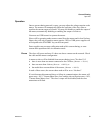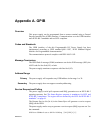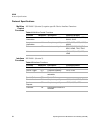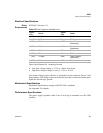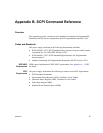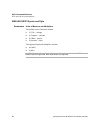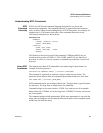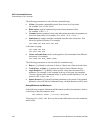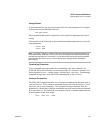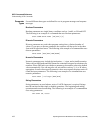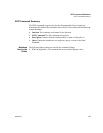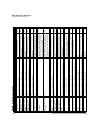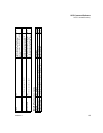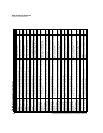SCPI Command Reference
Understanding SCPI Commands
Release 2.1 99
Understanding SCPI Commands
SCPI
Command
Hierarchy
SCPI is an ASCII-based command language designed for use in test and
measurement equipment. The command structure is organized around common
roots, or nodes, which are the building blocks of SCPI subsystems. An example of a
common root is CALibration, and some of the commands that reside in the
CALibration subsystem are shown below.
CALibration
:CURRent
[:DATA] <numeric value>
:LEVel {MIN|MAX}
[:SECure]
:CODE <new code>
:STATe {OFF|ON}, <code>
:STATe?
CALibration is the root keyword of the command. CURRent and SECure are
second-level keywords, and DATA, LEVel, CODE, and STATe, are third-level
keywords. A colon (:) is used to separate a command keyword from a lower-level
keyword.
Using SCPI
Commands
This manual may show SCPI commands in the either long or short format. An
example of the long format is:
CALibration:CURRent:LEVel {<current>|MIN|MAX}
The command is expressed as a mixture of upper- and lowercase letters. The
uppercase letters indicate how the command can be abbreviated to its short form:
CAL:CURR:LEV {<current>|MIN|MAX}
SCPI commands can be sent in long or short forms. The short form is typically better
for data entry. The long form is usually better for readability.
Command strings are not case sensitive: CURR, Curr, and curr are all acceptable
abbreviations for CURRent. As for the long form, CURRENT, Current, and current
are all acceptable.
The command strings include punctuation. While some punctuation is sent with the
string, other markings are used to identify different elements of the command syntax
and are not sent with the string.



